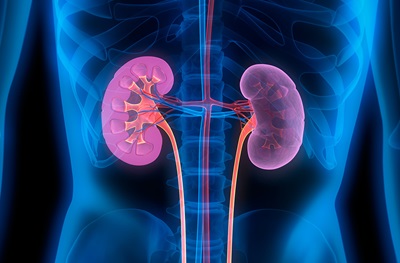
PHILADELPHIA — Diabetic kidney disease (DKD), which affects between 20 to 40 percent of people with diabetes, is a serious complication that can ultimately lead to end-stage kidney disease—a life-threatening condition that requires either dialysis or kidney transplant. Now, as part of an effort to reduce the rate of patients with DKD who develop kidney failure, a team of researchers in the Perelman School of Medicine at the University of Pennsylvania (PSOM) are spearheading an industry-academic collaboration to better understand the development and progression of the disease and advance research efforts aimed at preserving kidney function in these patients.
Investigators at more than 20 institutions nationwide will participate in the Transformative Research in Diabetic Nephrology (TRIDENT) study. The study, which is supported by about $5 million in grants, aims to identify a combination of clinical (blood, urine and kidney tissue), molecular (genetic, epigenetic, genomic) or histopathologic features that characterize people who have DKD and rapid kidney function decline.
"The lack of effective therapeutics for DKD reflects our poor understanding of the disease pathogenesis," said the study's principal investigator Katalin Susztak, MD, PhD, a professor of Medicine in Renal-Electrolyte and Hypertension and Genetics in the PSOM. "During the past 20 years, the rate of patients with DKD who develop end-stage kidney disease has remained largely unchanged. Through this collaboration, we hope to gain a better understanding of DKD pathogenesis and, ultimately, support the development of safe and effective therapies that preserve kidney function in these patients."
DKD, or diabetic nephropathy, affects the kidneys ability to remove waste products and extra fluid from the body. The condition can lead to a variety of complications, including irreversible damage to the kidneys, heart and blood vessel disease, and damaged nerves. Recent advances in medicine and technology have helped patients with DKD better control their blood sugar and blood pressure levels, leading to a significant reduction in amputations and heart-disease complications. However, there are no therapies to stop or reverse the damage to the kidneys' filtering system—all currently available therapies aim to slow the disease progression.
As part of the TRIDENT study, investigators are collecting human kidney tissue samples from patients with diabetes to perform comprehensive genetic, genomic and epigenetic profiling studies to identify the molecular fingerprints of progressive kidney failure in patients with diabetes. Jonathan J. Hogan, MD, director of the Glomerular Disease Program, is overseeing the tissue collection and patient enrollment at Penn.
"Very few patients with diabetes undergo a kidney biopsy to accurately define the cause of their kidney disease" said Raymond R. Townsend, MD, director of Penn Medicine's Hypertension Program and the director of the TRIDENT data coordinating center. "When designing this study, we built off of the successful approaches used in oncology, where the examination of tissue samples, coupled with multi-omics profiling led to improvements in disease understanding and the development of targeted therapies. In this case, we hope our comprehensive approach will provide us with more clarity about the development and progression of DKD—and identify patients who could receive more targeted therapies to treat the condition."
Additional Penn researchers include Shira Blady, Matthew Palmer, and Kathryn Steinbugler. The project is supported by grants from the Juvenile Diabetes Research Foundation, as well as pharmaceutical companies GlaxoSmithKline, Regeneron Pharmaceuticals, Boehringer-Ingelheim, and Gilead Sciences.






